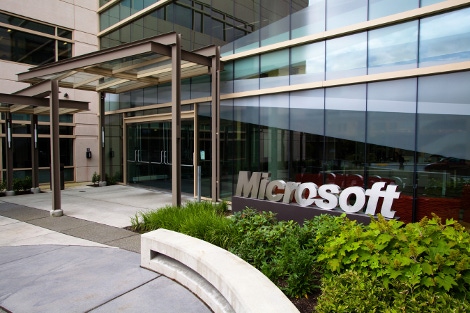Microsoft’s Second-Gen Open Compute Server Design Now Open SourceMicrosoft’s Second-Gen Open Compute Server Design Now Open Source
Latest cloud server designs feature dual CPUs, support for FPGAs, high-capacity SSD memory

Microsoft has released the second-generation server design specification created to support all of its 200-plus cloud services into the public domain.
This is the second server spec the company has contributed to the Open Compute Project, a Facebook-led initiative to bring the ethos of open source software development to hardware and data center design. Microsoft became the second data center operator to open source its server design specs (first one was Facebook) in January, when it joined OCP and announced its first OCP server.
That announcement was part of a complete overhaul of the company’s server strategy. It went from every product team deciding on the kind of server they would use to support their service to a uniform approach, where all services would be supported by OCP machines.
High-volume buyers circumvent middle men
Web-scale data center operators like Facebook, Microsoft and Google design their own servers based on their needs and go directly to the same manufacturers in Asia hardware market “incumbents” (the likes of HP or Dell) go to. The volume of boxes they order gives them the power to bargain for low prices, which has created a whole new business segment for those manufacturers.
Facebook now has OCP designs for servers, storage, top-of-rack network switches, as well as data center racks.
An ecosystem of vendors has grown around OCP, where companies now compete not only for the business of the world’s Internet giants but for deals with other companies that operate large-scale data centers, such as cloud service providers and financial services companies.
Dual CPUs, FPGA support
Kushagra Vaid, general manager of server engineering at Microsoft, announced the second-gen Open CloudServer specification (OCS v2) at the Open Compute EU Summit in Paris Thursday and wrote about it in a blog post. The company has now invested more than $15 billion in its global cloud infrastructure, he said.
The new server design spec is based on the latest Intel Xeon E5-26000v3 CPUs. The dual-processor design enables 28 compute cores per blade.
For the first time, Microsoft is incorporating field programmable gate arrays (FPGAs) into its servers to make them adaptable for different workloads. The company’s researchers published a paper on reconfigurable servers for large-scale data center services that featured FPGAs in June.
Diane Bryant, general manager of Intel’s data center group, talked about the chipmaker’s latest Xeon E5 chips that would work coherently with FPGAs at the GigaOm Structure conference in San Francisco. These hybrid chips, she said, would come in a single package with FPGAs and be socket-compatible with regular Xeon E5 chips.
Microsoft’s OCS v2 spec allows for integration of FPGAs but does not require it. The platform overall is highly configurable, allowing for integration of various components and add-on cards.
The spec also incorporates support for high-capacity solid state disk memory, 40 Gigabit Ethernet networking, and high-capacity (1600w) power supplies, among other features.
Here’s a list of the key specs:
A dual-processor design, built on Intel Xeon E5-2600v3 (‘Haswell’) CPUs, enabling 28 cores of compute power per blade, and reflecting Microsoft’s joint engineering collaboration with Intel to develop the next generation board.
Advanced networking for low latency, high bandwidth, highly-virtualized environments, based on 40-gigabit Ethernet networking, with support for routable RDMA over Converged Ethernet (ROCEv2).
Flexibility incorporated into the core design itself. This allows the integration of a variety of components and add-on cards, including FPGA accelerators, which enables customers to tune their servers for their own unique workloads.
Low-cost, high-bandwidth, Flash-based memory support, incorporating the latest form factor for m.2 Flash memory. This allows OCS v2-based servers to incorporate higher-capacity SSDs, while ensuring TCO optimization by virtue of using cost-optimized NAND.
A compact, high-capacity power supply, capable of delivering 1600 watts of power, with a high holdup time of 20 milliseconds.
Support for high memory configurations, along with flexibility in the amount of memory deployed, by virtue of support for 128GB, 192GB, and 256GB memory capacity configurations.
Microsoft is showcasing OCS v2 servers at this week’s summit in Paris designed by Quanta QCT, Wiwynn and ZT Systems. The company listed Intel, Mellanox, Seagate, Geist and Hyve Solutions as component vendors that support the spec.
About the Author
You May Also Like







